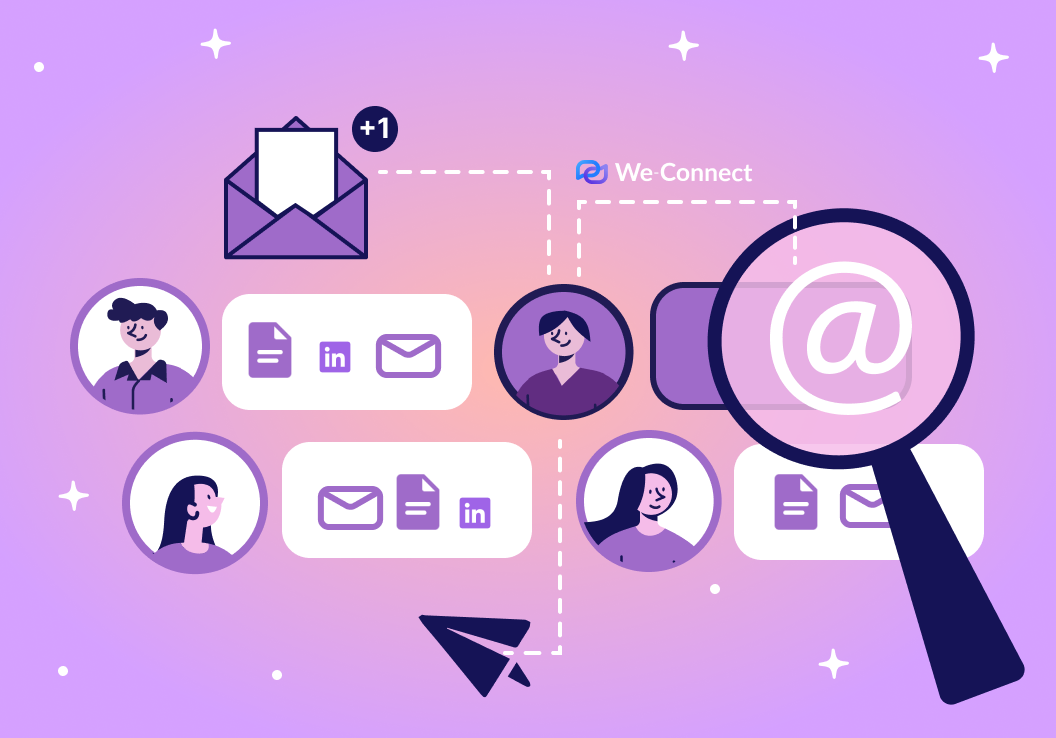Email authentication is the first step to achieving high conversion rates. Just think about it… If all your emails end up in the spam folder because of an unauthenticated domain – you’ll have a 0% open rate. That means 0% click and a 0% conversion rate.
In this blog post, we’ll cover everything you need to know about how, why, and when you should authenticate your domain. So strap in, and let’s get moving.
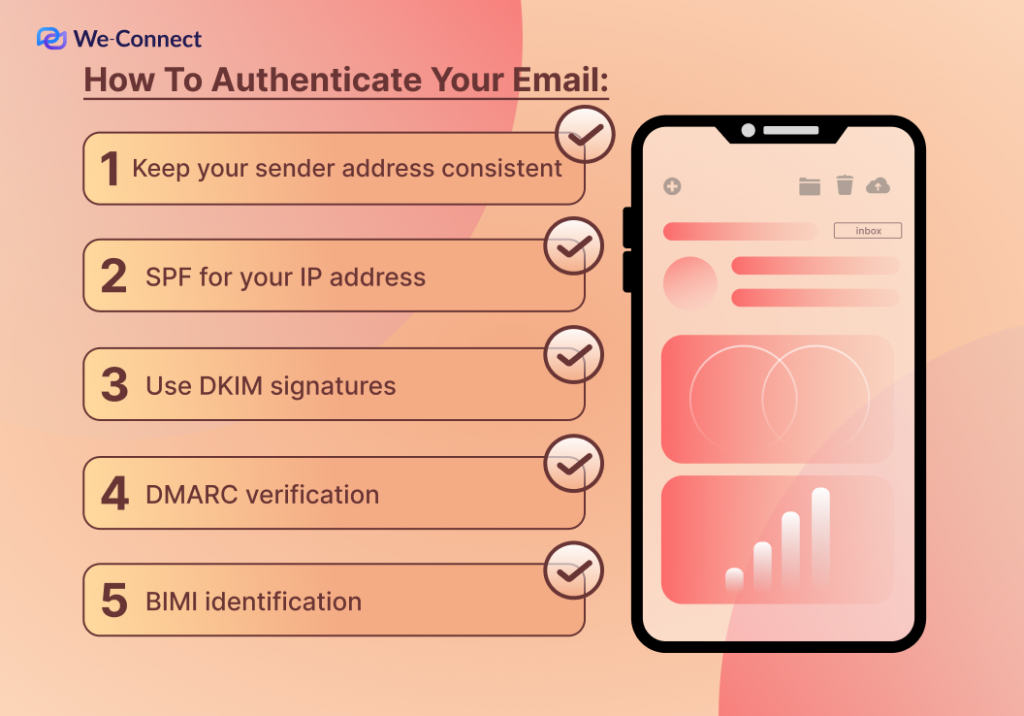
Why Should You Authenticate Your Email Address?
The answer is obvious: yes, you should authenticate your email address. The why, however, is less obvious. Here are a few reasons you should authenticate your domain:
- To verify that you are a legitimate sender.
- To increase deliverability and reduce bounce/spam
- To prevent email spoofing (sending a message pretending to be another person)
In summary, email authentication ensures that a domain is really owned by that person. It prevents spam and malicious actions from others.
To learn what else you can do to stay off the black hole that is the spam list, check out our newest blog post.
How To Authenticate Your Email Address?
It doesn’t matter if you’ve just registered a new domain or have already sent hundreds of email campaigns. The right time to authenticate your email address is right now. Here are some of the ways you can authenticate your email address:
Keep Your Sender Address Consistent
To build trust with your email recipients, it’s important to stick to a consistent sender address and friendly sender name. For example, designate a certain person (this can be a ghost employee) who sends all communications regarding feature updates. Do the same for marketing emails and promotions. That way, rather than feeling like another cog in the machine, your leads will feel that a real person is reaching out to them.
Changes in sender information make your recipients more susceptible to phishing attacks. Even if you’re not behind it, scams based on your brand make your company look bad. For that reason, we also recommend that you avoid using domains that are similar to your brand’s domain.
Secure Your IP Addresses with SPF Authentication
Sender Policy Framework (SPF) is the first stepping stone to authenticating your domain. SPF is an authentication method that verifies the email sender’s actual IP address against the list of authorized IP addresses for that domain. SPF authentication is one of the many ways email search providers prevent spoofing and spam messages.
SPF authentication can get confusing (especially if you’re new to email marketing). Here’s a step-by-step process that you can follow:
- Collect all your IP addresses and domains used to send emails.
- Create an SPF record as a TXT file (detailed process here)
- Publish your SPF record on your DNS (this process itself depends on your domain provider – you can usually find a step-by-step guide in their support section).
- Test your SPF verification with an SPF Record Checker.
If you don’t want your messages to appear as spam, SPF authentication is essential.
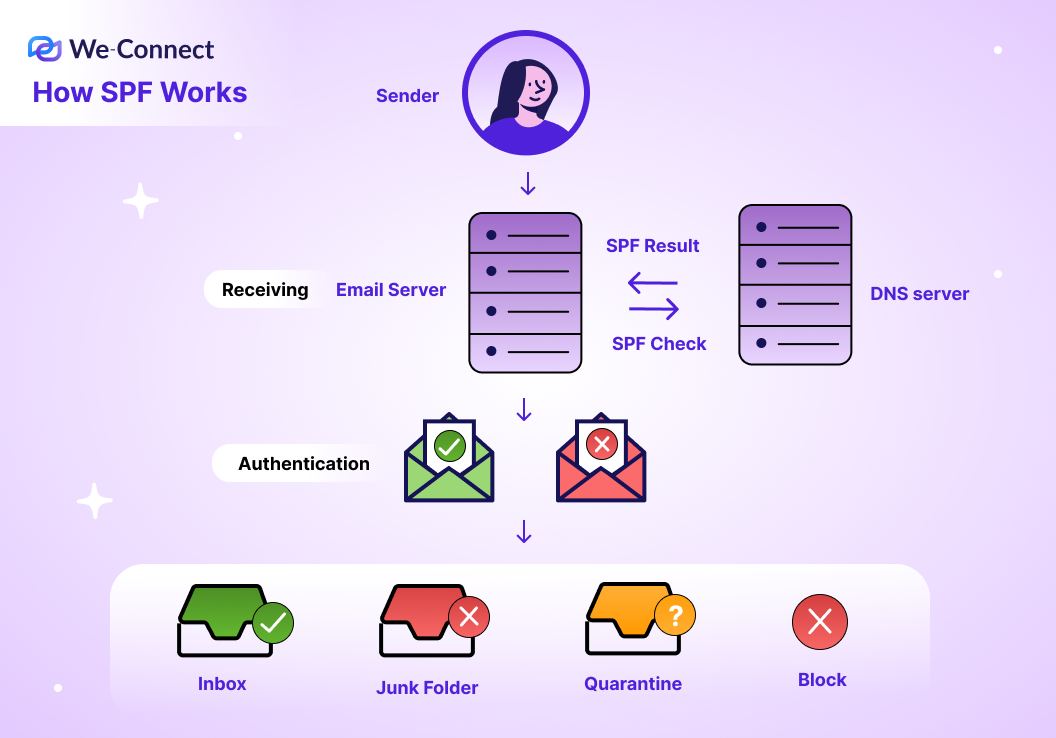
Use DKIM Signatures to Authenticate Your Messages
DomainKeys Identified Mail (DKIM) is really similar to SPF authentication – but it requires a few additional steps. DKIM verification cryptographically marks your messages to ensure that they haven’t been altered in transit (again, preventing spoofing and spam mail).
A typical process to add DKIM signatures to your messages looks
like this:
- Gather all of your sender domains and IP addresses.
- Install a DKIM package for your email provider (many large providers already have these installed).
- Create public and private DKIM keys (the public key will be displayed on your public DNS record)
- Publish your private DKIM key according to the email provider’s specifications.
- Save your private DKIM key
- Test DKIM functionality
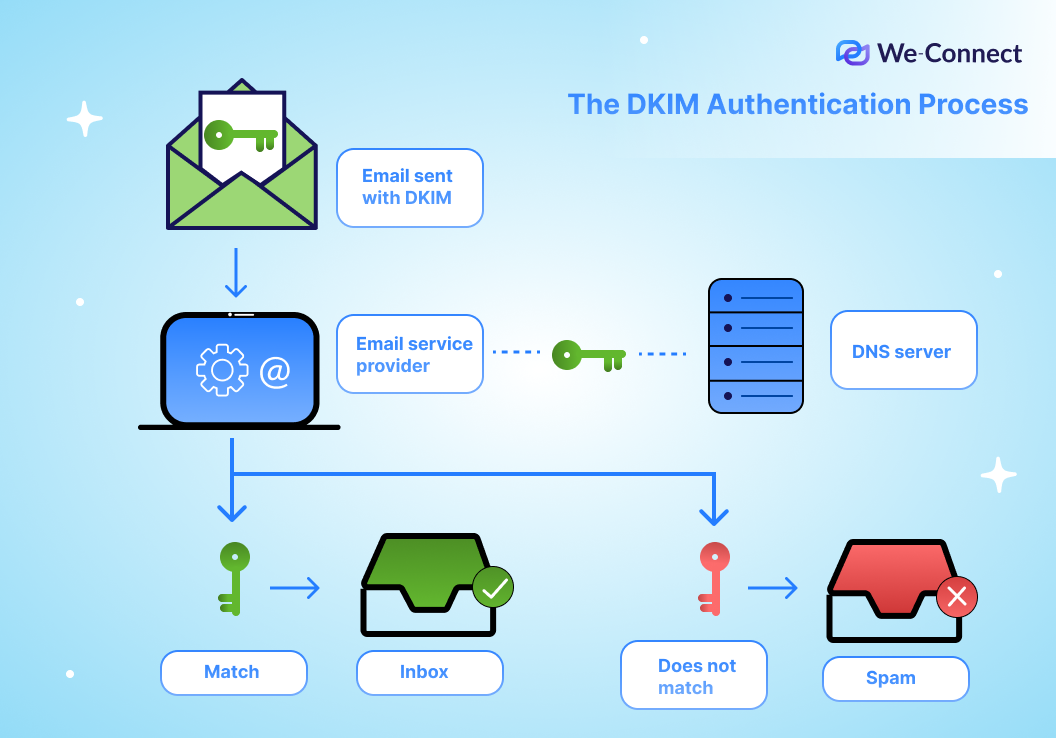
Protect Your Domain with DMARC Authentication
Domain-based Message Authentication, Reporting, & Conformance (DMARC) is a protocol that uses both SPF and DKIM authentication to prevent phishing and spoofing spam. Starting in February 2024, both Google and Yahoo have updated their sender requirements to keep up with DMARC authentication.
Luckily, if you’ve already followed along with SPF and DKIM verification, DMARC authentication is a straightforward process. Here’s what it looks like:
- Authenticate SPF txt files for your sender domains.
- Authenticate DKIM for your sender domains.
- Set up a DMARC txt file for your sender domains (detailed process here).
- Test DMARC functionality.
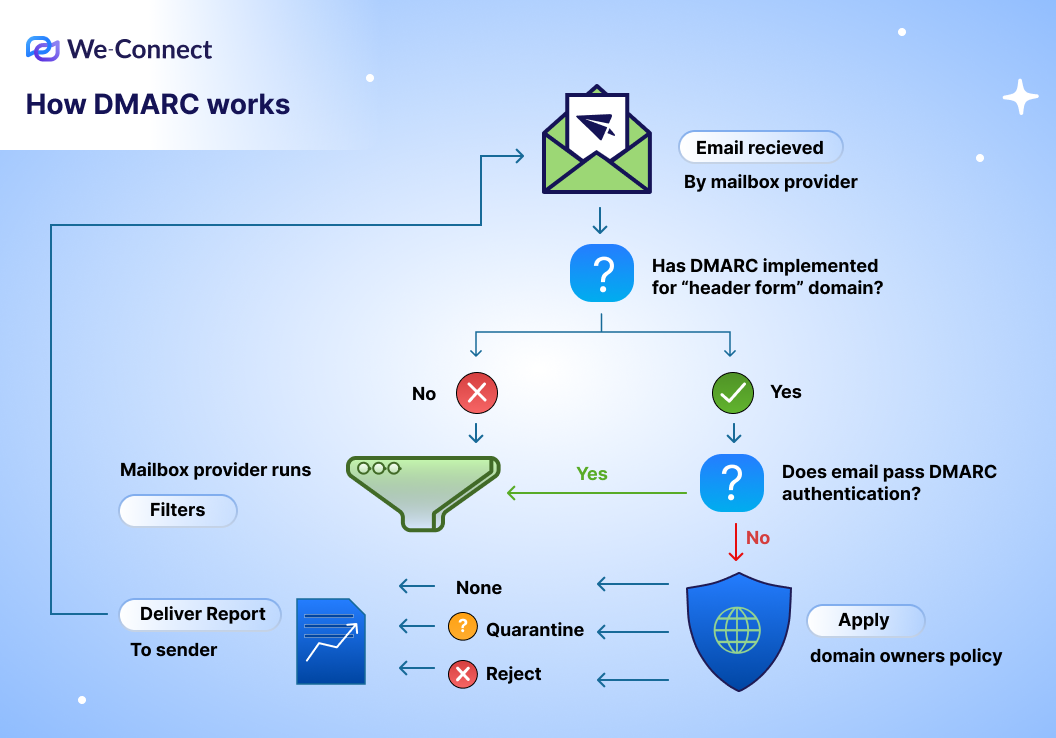
Get Ready for BIMI
Brand Indicators for Message Identification (BIMI) is an additional layer of protection that boosts trust for your recipients and email providers. With BIMI, you can display your brand’s logo right in the inbox of a sender – making it easier for subscribers to identify your messages.
For a detailed view of how to set up BIMI for your email, we recommend reading this quick-start guide from Google.
Best Practices for Implementing Email Authentication:
Once you’ve authenticated your domain using SPF, DKIM, DMARC, and/or BIMI verification, you’re ready to release your first email campaign. However, before you start, there are a few final things that you want to consider.
Monitor Your Email Activity
It doesn’t matter if you only have one email campaign or a hundred. You should regularly monitor email logs to detect any suspicious actions or anomalies. Even if you don’t find anything alarming, email logs can provide valuable insights into email traffic, including:
- The number of emails sent and received
- The sources of email traffic
- The types of authentication used
By monitoring your email logs, you verify that your analytics are displaying the correct information.
Don’t forget to maintain a clean email list. Give your readers the opportunity to opt-out themselves with an unsubscribe link.
Keep Email Servers Up-to-Date:
If your email servers aren’t secure, your customer’s information is at risk. When a security breach happens, your company can face fines, bad publicity, and increased customer attribution.
Keep your servers safe by:
- Installing security patches and updates
- Regularly scanning email servers for vulnerabilities
- Enforcing strict access controls to prevent unauthorized access
Provide Employee Training:
As the CEO, you’re most likely not sending email campaigns (unless you’re that one-person bootstrapped org). Make sure that anyone who has access to your email servers is up-to-date with the current best practices. Here’s what else you can do:
- Educate employees on how to recognize phishing emails and other email-based scams
- Provide guidelines on how to handle suspicious emails, including who to contact and what information to provide
- Test employees’ awareness of email security best practices
By providing employee training, organizations can improve their overall email security posture and reduce the risk of email-based threats.
Conclusion
In summary, implementing email authentication will help you boost deliverability and, in turn, the success of your campaigns. If you’re still sending email marketing messages without a verified domain in 2024, you’ll quickly find that open rates and conversion will dwindle.
Boost your outreach with a multichannel marketing approach tailored to your business needs. Try We-Connect for 14 days free.

